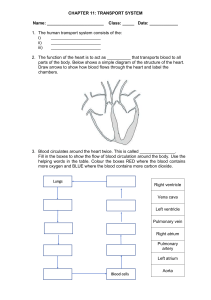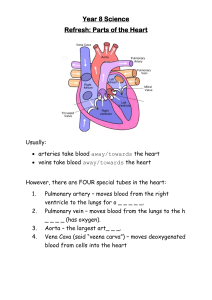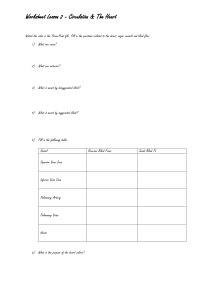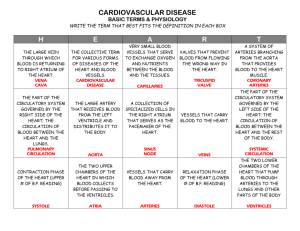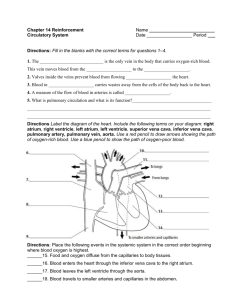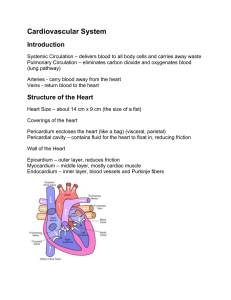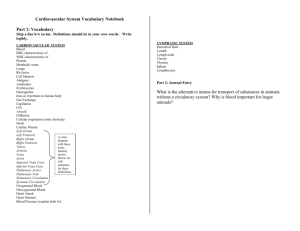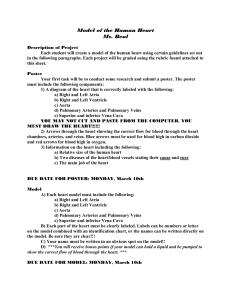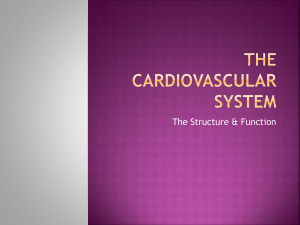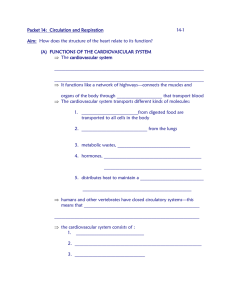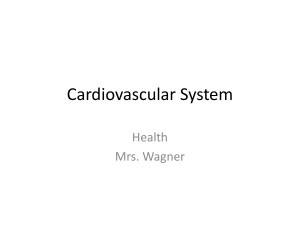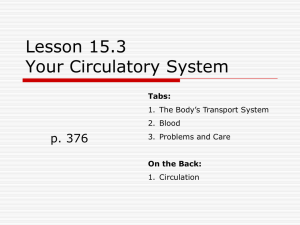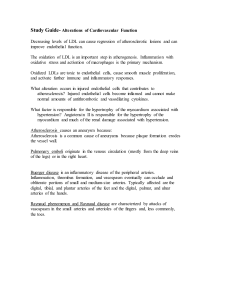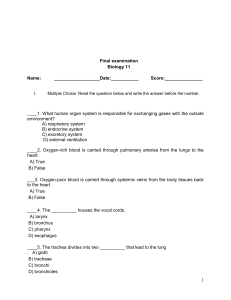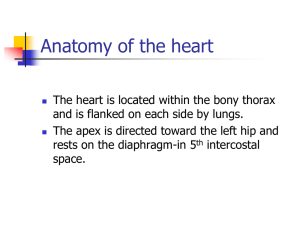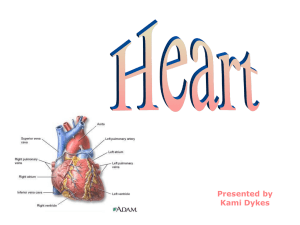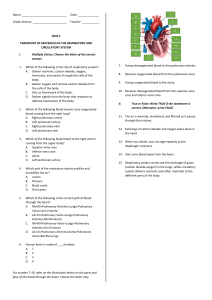Test Review
advertisement
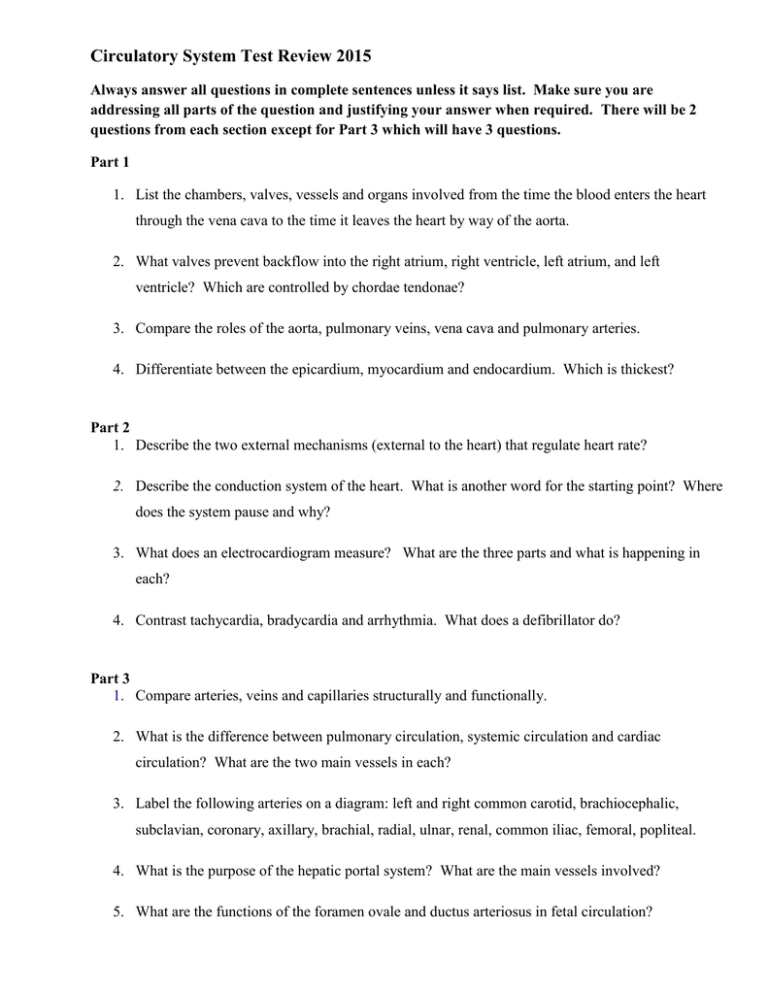
Circulatory System Test Review 2015 Always answer all questions in complete sentences unless it says list. Make sure you are addressing all parts of the question and justifying your answer when required. There will be 2 questions from each section except for Part 3 which will have 3 questions. Part 1 1. List the chambers, valves, vessels and organs involved from the time the blood enters the heart through the vena cava to the time it leaves the heart by way of the aorta. 2. What valves prevent backflow into the right atrium, right ventricle, left atrium, and left ventricle? Which are controlled by chordae tendonae? 3. Compare the roles of the aorta, pulmonary veins, vena cava and pulmonary arteries. 4. Differentiate between the epicardium, myocardium and endocardium. Which is thickest? Part 2 1. Describe the two external mechanisms (external to the heart) that regulate heart rate? 2. Describe the conduction system of the heart. What is another word for the starting point? Where does the system pause and why? 3. What does an electrocardiogram measure? What are the three parts and what is happening in each? 4. Contrast tachycardia, bradycardia and arrhythmia. What does a defibrillator do? Part 3 1. Compare arteries, veins and capillaries structurally and functionally. 2. What is the difference between pulmonary circulation, systemic circulation and cardiac circulation? What are the two main vessels in each? 3. Label the following arteries on a diagram: left and right common carotid, brachiocephalic, subclavian, coronary, axillary, brachial, radial, ulnar, renal, common iliac, femoral, popliteal. 4. What is the purpose of the hepatic portal system? What are the main vessels involved? 5. What are the functions of the foramen ovale and ductus arteriosus in fetal circulation? 6. What are HDL and LDL? Compare their roles. Part 4 1. Compare heart murmurs, valvular stenosis and mitral valve prolapse. 2. Compare pericarditis, myocarditis and endocarditits. Which is potentially the most dangerous and why? 3. How is angina pectoris different from a myocardial infarction? 4. How is a stroke different from an aneurysm? 5. What is referred to as the “Silent Killer”? What are risk factors for this?
